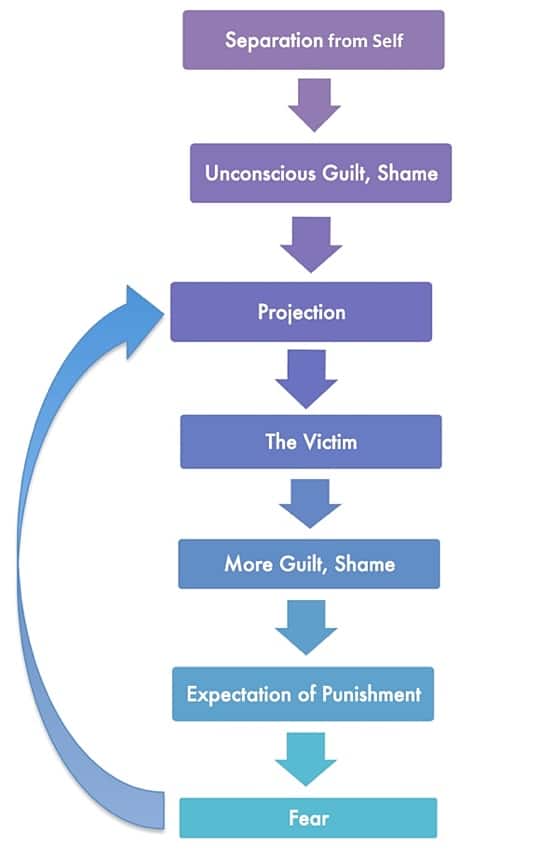In this guide, we will explore what Shame Cycle is, the different types, the causes, the risk factors, the impact on personal, professional, and social life, and how to break free from it. We will also hear from experts about brain activity and therapies that can help.
Contents
Understanding Shame Cycle
The shame cycle is a term used to describe a range of negative feelings that people experience when they think they have done something wrong or bad. It can be very damaging to an individual’s mental health and can cause problems in all areas of their life.
Male Vs. Female Shame Cycle
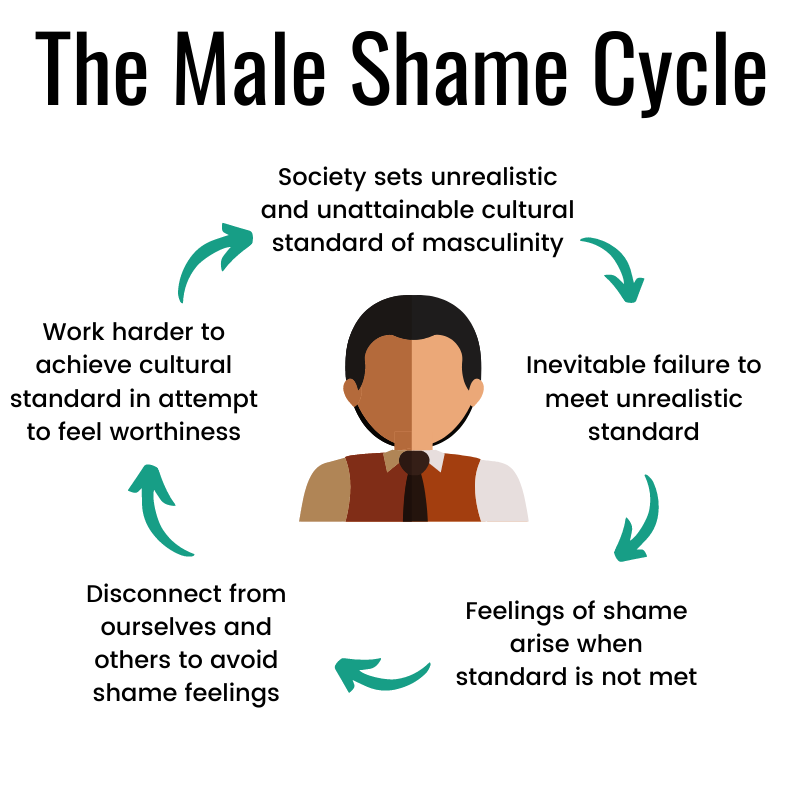
- There is a male shame cycle that is often talked about which is similar to the general vicious cycle of shame but has some specific aspects to it. The main difference between the two is that the male shame cycle tends to be more aggressive and violent. It can involve behaviors such as drinking, gambling, and using drugs as a way to cope with feelings of shame.
- There is also a female shame cycle that is often talked about. In this cycle of shame, she is more likely to involve behaviors such as eating disorders, self-harm, and addictions to substances or activities.
Types of Shame Cycle
The four main types of cycles of shame are:
- Internalized Shame Cycle: The internalized shame cycle is the most common type and it happens when a person feels ashamed of themselves and their actions. They will usually keep these feelings to themselves and will not share them with anyone else. This can be very damaging to a person’s mental health and can lead to problems in all areas of their life.
- Externalized Shame Cycle: The externalized shame cycle is the second most common type and it happens when a person feels ashamed of their actions, but instead of keeping these feelings to themselves, they will share them with others. This can be damaging to relationships as it can often lead to conflict.
- Interpersonal Shame Cycle: The interpersonal shame cycle is the third most common type and it happens when a person feels ashamed of their actions and how they have affected other people. This type of Shame Cycle is often seen in abusive relationships, where the abuser feels ashamed of their actions but instead of taking responsibility, they will blame the victim.
- Public Shame Cycle: The public shame cycle is the fourth most common type and it happens when a person feels ashamed of their actions and how they have affected the public. This type of Shame Cycle is often seen in cases of public disgraces, such as a politician being caught in a scandal.
Causes And Risk Factors
There are many different causes of the cycle of shame. Some of the most common are:
- Witnessing violence
- Having a difficult childhood
- Experiencing a traumatic event
- Bullying or other forms of abuse
- Low self-esteem and negative body image
- Having a mental health condition, such as depression or anxiety
Some risk factors can increase the chances of someone experiencing the cycle of shame. These include:
- Being bullied or abused
- Experiencing a traumatic event
- Living in a dysfunctional or violent home
- Low self-esteem or a negative body image
- Having experienced physical, sexual, or emotional abuse
- Having a family history of mental health conditions or addiction
Personality Types Prone to Shame Cycle
Some personality types are more prone to this vicious cycle of shame. These include people who are:
- Withdrawn
- Impulsive
- Perfectionists
- Over-sensitive
- High achievers
- People pleasers
Behaviors That Promote Shame Cycle
Some behaviors can promote this vicious cycle of shame. These include:
- Trying to be perfect
- Constantly putting others first
- Being overly critical of yourself
- Avoiding new experiences or activities out
Living With Shame Cycle
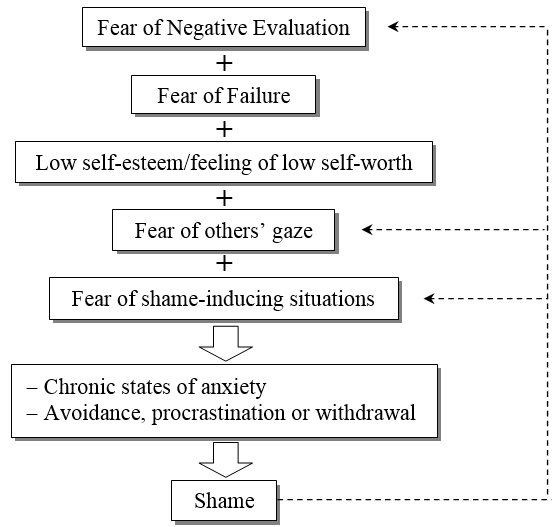
The cycle of shame can be very damaging and can impact all areas of an individual’s life. It can cause problems in relationships, work, and social life.
Impact on Personal Life
People who are in this vicious cycle of shame may find it difficult to have close relationships with others. Since they may feel ashamed of themselves and feel like they are not good enough. Thus, this can lead to feeling isolated and alone.
Impact on Professional Life
People who are experiencing this issue may find it difficult to maintain a successful career. Since they may feel like they are not good enough or that they are not worthy of success. Thus, this can lead to them feeling anxious and stressed. As a result, it can impact their work performance.
Impact on Social Life
People who are experiencing this condition may find it difficult to have friends and maintain social relationships. Since they may feel like they are not good enough or that they are not worthy of friendship. Thus, this can lead to them feeling isolated and alone.
Breaking The Shame Cycle
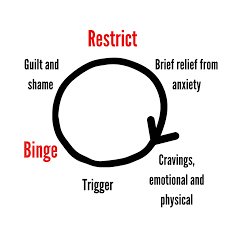
There is no one-size-fits-all answer to breaking the cycle of shame. As the approach you take will vary depending on your unique circumstances. However, there are several self-help tips and techniques that can be useful for overcoming this destructive pattern of behavior.
Self-help Tips
Some self-help tips can help break this cycle of shame. These include:
- Practicing self-compassion, acceptance, and forgiveness
- Identifying your shame triggers and working to avoid them or manage them in a healthy way
- Challenging your negative thoughts about yourself and replacing them with more positive self-talk
- Creating a support system of friends and family who can offer you encouragement and practical help
- Take care of yourself physically by eating a healthy diet, getting enough exercise, and getting adequate sleep
- Seeking professional help if you feel stuck or unable to break the cycle on your own
Self-help Tools
Some self-help tools can help break this cycle of shame. These include:
- Self-compassion exercises
- Mindfulness meditation
- Positive affirmations
- Support groups
Talking To a Professional
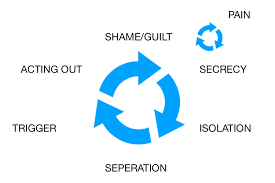
If you are struggling with this issue, it is important to talk to a professional. Many different therapies can help address this. Some of the most common therapies include:
- Cognitive-behavioral therapy (CBT)
- Dialectical behavior therapy (DBT)
- Emotion-focused therapy
- Psychodynamic therapy
- Family systems therapy
- Individual counseling
- Support groups
- Group therapy
Case Study
Here is a case study of a person who struggled with this condition.
Maria is a 32-year-old woman who has struggled with the cycle of shame for most of her life. She has always been a perfectionist and has always put others first. However, she is very critical of herself and is always trying to be perfect. Furthermore, Maria has had problems maintaining relationships. As she is ashamed of herself and feels like she is not good enough.
In addition, she has also had difficulty maintaining a successful career. As she is always feeling anxious and stressed. Expectedly, Maria has no social life. As she feels like she is not good enough to be around other people.
So, Maria decided to seek help and started therapy. The therapist worked with her on building self-esteem and accepting compliments. They also worked on challenging her negative thoughts.
In addition, the therapist also encouraged her to speak positively about herself. Maria was also encouraged to recognize her accomplishments and take care of herself emotionally and physically.
Eventually, after a few months of therapy, Maria started to see progress. She was able to challenge her negative thoughts more effectively and began to feel better about herself.
Moreover, she also started to accept compliments and recognized her accomplishments. Maria began to socialize more and started to have healthier relationships. Soon enough, she also began to maintain a successful career.
Hearing From Experts
Here is what some experts have to say about this cycle of shame:
- “The cycle of shame is a destructive pattern of thoughts and behaviors that can lead to feelings of worthlessness, isolation, and depression.” -Therapist, TherapyMantra
- “The cycle of shame is very harmful and can lead to a lot of emotional pain.” -Therapist, TherapyMantra
- “The cycle of shame can be very damaging to a person’s mental health and social life.” -Psychologist, TherapyMantra
Brain Activity
Here is some brain activity associated with the cycle of shame:
- Amygdala: Activation is associated with fear, anxiety, and stress.
- Insula: This area is associated with feelings of disgust and shame.
- Prefrontal Cortex: This area is responsible for executive functions such as decision making, problem-solving, and impulse control. It also plays a role in regulating emotions.
Resources
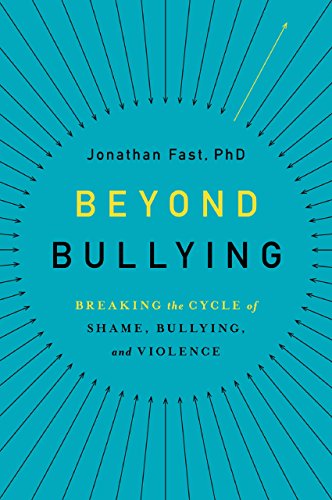
There are many resources available to help you break this cycle. The following are a few of our favorites:
Books
- Women, Sex, and Shame by Jill McDevitt
- The Gifts of Imperfection by Brene Brown
- The Feeling Good Handbook by David D. Burns
Conclusion
The Shame Cycle is a destructive pattern of thoughts and behaviors that can lead to feelings of worthlessness, isolation, and depression. So, it can be very harmful and damaging to a person’s mental health and social life.
If you are struggling with this condition, it is important to seek help. Also, many different therapies can help address the issue. Furthermore, you can also find self-help tools and techniques to help break the cycle.
A Word From Therapy Mantra
Your mental health — Your psychological, emotional, and social well-being — has an impact on every aspect of your life. Positive mental health essentially allows you to effectively deal with life’s everyday challenges.
At TherapyMantra, we have a team of therapists who provide affordable online therapy to assist you with issues such as depression, anxiety, stress, workplace Issues, addiction, relationship, OCD, LGBTQ, and PTSD. You can book a free therapy or download our free Android or iOS app.
